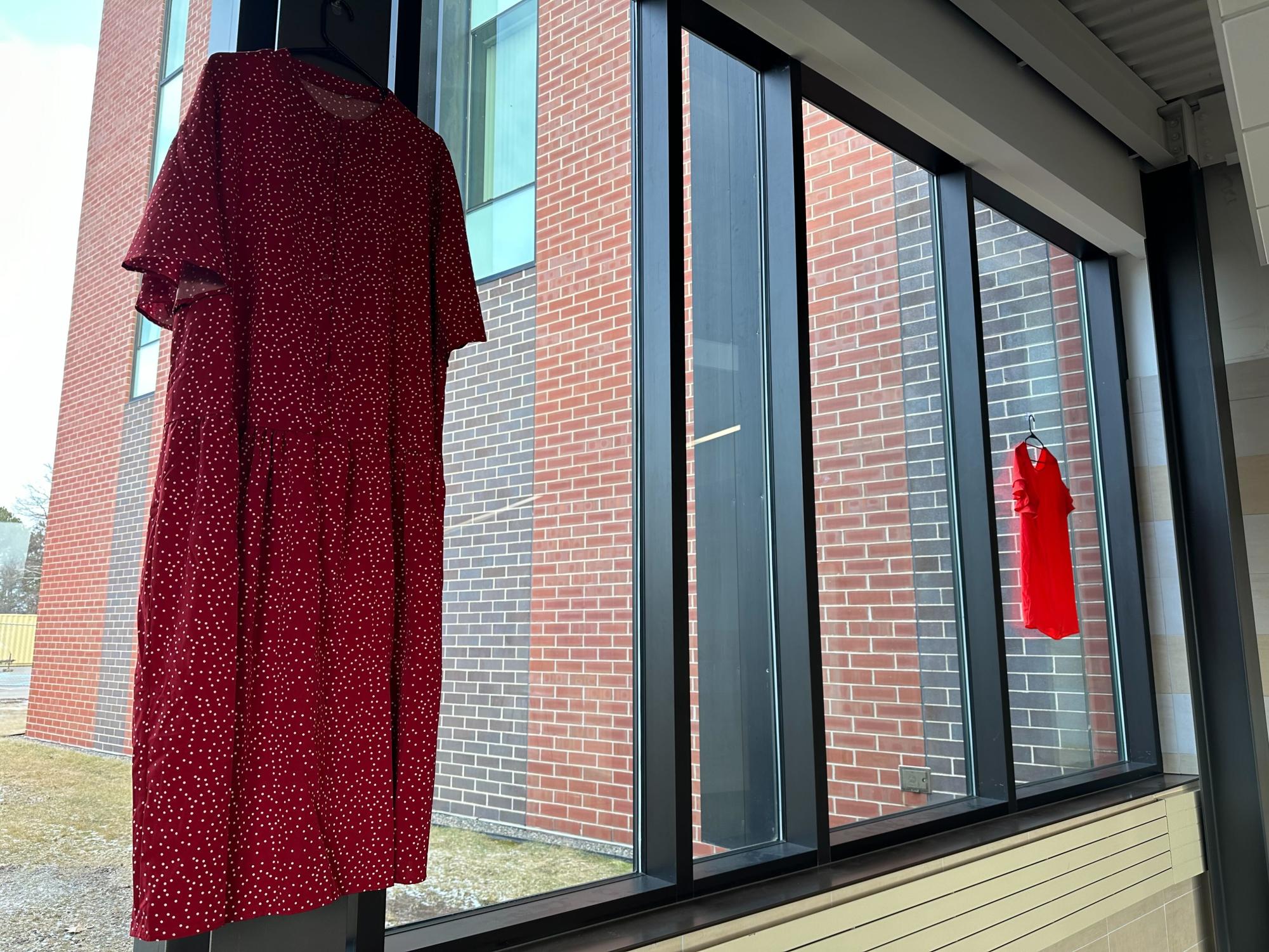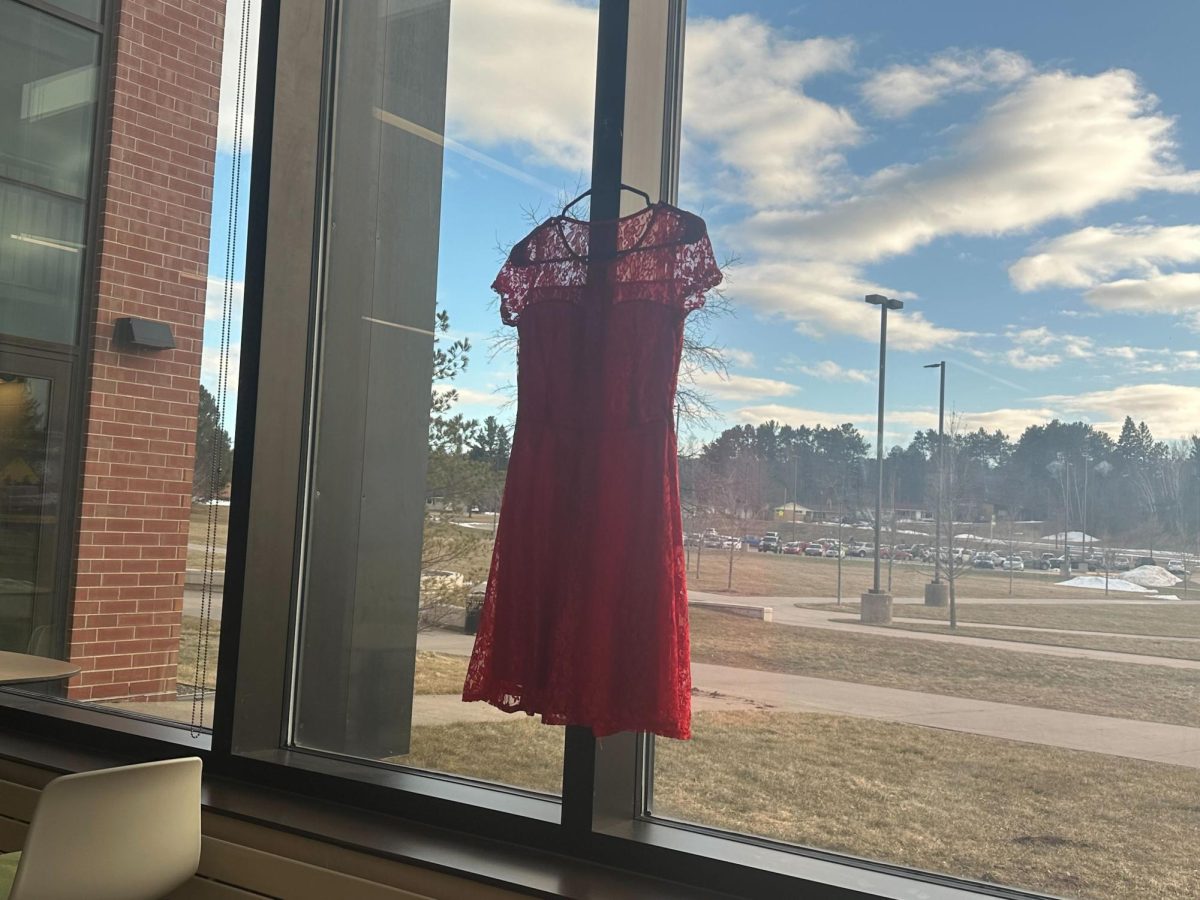The Center for Native American Studies (CNAS), the Native American Student Association (NASA) and Mino-bimose’idiwag (Walking the Path Together) have collaborated to put on red dress displays throughout NMU’s campus.
These displays have been put up in Jamrich Hall, the Science Building, the Northern Center, the Whitman Woods and at the Anishinaabe land acknowledgement sign in front of the McClintock Building to bring awareness to missing and murdered Indigenous persons.
“The dresses can act as a really haunting imagery of the idea that there is an absence of women, girls, [and] two spirit people within Indigenous communities,” said Shelby Boggs, a tribal citizen of the Sault Ste. Marie Tribe of Chippewa Indians who serves as NASA’s vice president and an office assistant at the CNAS. “I want people to be aware of the modern-day struggles of Indigenous peoples and communities, and I want people to know that we are still here and that should be celebrated. But we unfortunately still face modern-day struggles and genocide.”
The month of May is Missing and Murdered Indigenous Women (MMIW) month, although at Northern this remembrance and awareness is observed between March and April to highlight Women’s History Month in March and Sexual Assault Awareness Month in April.
“Although this is talking about kidnapping and murder [of Indigenous women], it also is the larger picture of violence against women,” Boggs said.
Signs posted with the red dresses state that four out of five Indigenous women experience violence in their lifetime, and name homicide as the third leading cause of death for Indigenous women. Donations to “end violence against Native women” and to “[restore] sovereignty for tribes to hold perpetrators accountable” can be made to the National Indigenous Women’s Resource Center by scanning QR codes posted on the signs near the displays.
“Although this epidemic primarily affects women and girls, it also affects two spirit — which is an Indigenous term for gender fluid people — queer people and even men and boys,” Boggs said. “Indigenous men have high rates of victimization as well, but because of toxic masculinity in the society we live in we know that those numbers are underreported.”
Boggs and others involved in the red dress displays call everyone to action regarding MMIW.
“We need more people being allies to our causes and advocating for our empowerment and advancement, because epidemics like this thrive off of silence,” Boggs said. “It’s the idea that we want people to be aware of this. We want people to talk about this. We want people to question this.”
NASA and CNAS are currently planning a Walk for Justice to raise awareness about violence against Indigenous women and persons on April 27. More details will be available after planning is finalized.









